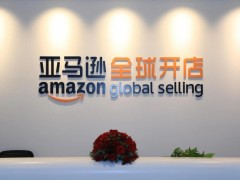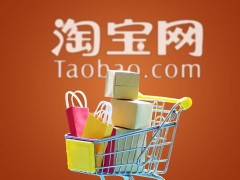What is the difference between live streaming and traditional e-commerce?
区别一:决策时间不同
由于传统电商与消费者之间存在着信息壁垒,这就让消费者需要花费大量的时间来挑选合适的商品。直播电商采取的形式是由主播展示和讲解产品,从而使用户产生下单行为,这时候主播就显得尤为重要,在成单的过程中起到的是一个促成的作用,用户很有可能会凭借对主播的印象而购买产品。整个过程从认识产品到下单往往只需要很短的时间。而传统的电商,用户通过自己的浏览,自己进行对比和决策,整个过程没有人推动进行,因此往往需要一个长时间的选择。
区别二:商品展现形式不同
直播电商采用的是视频直播的形式来展示商品,能够全方位多角度地展现产品,部分产品可以看到实时的使用效果,方便用户更直观的感受产品,从而进行衡量。相比之下,传统电商大多数采用的是图片的形式,无法看到产品的细节,以及不同角度,不同场景之下产品的本来面目。
区别三:运营平台不同
传统的电商仅限于淘宝、京东、拼多多等平台,用户使用平台的目的性很明确,就是为了购买商品。而直播电商除了在淘宝等平台,大多数可以在抖音、快手等短视频平台,可以在休闲娱乐的空闲时间,顺便观看直播并进行购买商品,趣味性更强。
区别四:社交属性不同
传统电商的目的性很明确,就是为了销售卖货,几乎没有社交属性,唯一具有互动性的是消费者可以咨询客服商品信息,整个过程互动性不强,缺少趣味性。而直播电商,消费者可以和主播进行实时互动,用户的问题也可以得到及时反馈,双方都能够达到有效的沟通,商家和消费者之间的互动也更有趣。
传统电商为直播电商的产生和发展奠定了基础,而直播电商也丰富了电商的经营模式,二者相辅相成。
Professional answer
Difference 1: Different decision-making time
Due to the information barrier between traditional e-commerce and consumers, consumers need to spend a lot of time to choose suitable products. Live streaming e-commerce takes the form of anchors showing and explaining products, so that users can place orders. At this time, the anchor is particularly important and plays a facilitating role in the process of placing orders. Users are likely to buy products based on their impression of the anchor. The whole process from knowing the product to placing an order often takes only a short time. In traditional e-commerce, users browse, compare and make decisions by themselves. The whole process is not driven by anyone, so it often takes a long time to choose.
Difference 2: Different forms of product display
Live streaming e-commerce uses video live streaming to display products, which can show products from all angles. Some products can see the real-time use effect, which is convenient for users to feel the product more intuitively and measure it. In contrast, most traditional e-commerce uses pictures, which cannot see the details of the product, as well as the true appearance of the product under different angles and scenes.
Difference three: different operating platforms
Traditional e-commerce is limited to platforms such as Taobao, JD.com, and Pinduoduo. The purpose of users using the platform is very clear, which is to buy goods. In addition to platforms such as Taobao, most live e-commerce can be found on short video platforms such as Douyin and Kuaishou. You can watch live broadcasts and buy goods in your free time for leisure and entertainment, which is more interesting.
Difference four: Different social attributes
The purpose of traditional e-commerce is very clear, which is to sell goods. It has almost no social attributes. The only interactive thing is that consumers can consult customer service for product information. The whole process is not very interactive and lacks fun. In live e-commerce, consumers can interact with the anchor in real time, and users' questions can also get timely feedback. Both parties can achieve effective communication, and the interaction between merchants and consumers is more interesting.
Traditional e-commerce has laid the foundation for the emergence and development of live e-commerce, and live e-commerce has also enriched the business model of e-commerce. The two complement each other.
Similar Q&A
recommend How to use Starbucks Douyin group purchase coupons?
E-c News Continuously pushing e-commerce knowledge to you








Latest Q&A More
-
Do I need a trademark to open a franchise store on Pinduoduo to sell books?
#Pinduoduo#
-
How to withdraw from a Pinduoduo store
#Pinduoduo#
-
How to withdraw from Pinduoduo merchants
#Pinduoduo#
-
How to pay fees when closing a Pinduoduo store
#Pinduoduo#
-
How to withdraw from Pinduoduo
#Pinduoduo#
-
Which store on Pinduoduo is authentic?
#Pinduoduo#
-
Which stores on Pinduoduo can buy genuine products?
#Pinduoduo#
-
How to check the store under Pinduoduo
#Pinduoduo#
-
How to receive Pinduoduo online game products
#Pinduoduo#
-
How to sell the electronic version on Pinduoduo
#Pinduoduo#
E-c News 2025-10-13 13:14:00

- African netizens use China Africa cross-border e-commerce platform for online shopping
- how is the new seller of cross-border e-commerce doing?
- how can cross-border e-commerce Amazon sell on Amazon platform without goods?
- Amazon store opening process and cost analysis!
- Amazon plans to expand its pharmacy business on a large scale and will add same day delivery service
